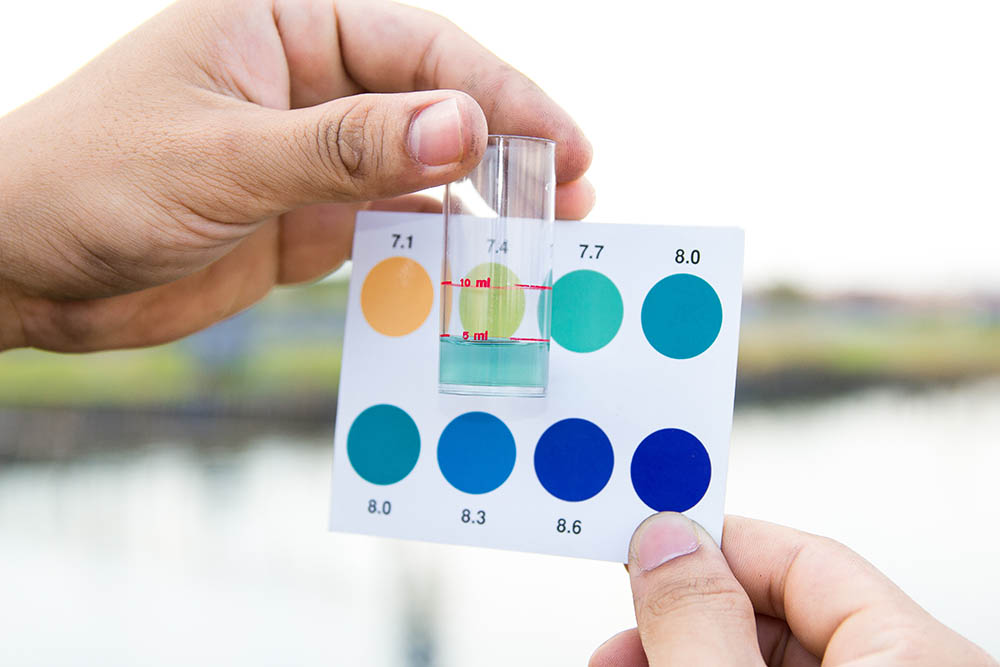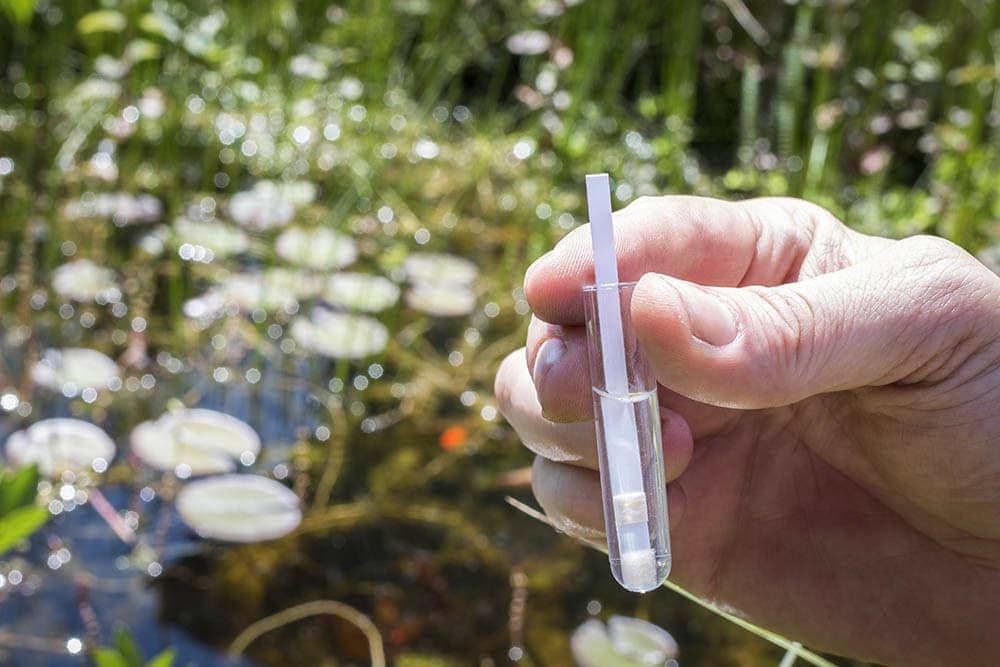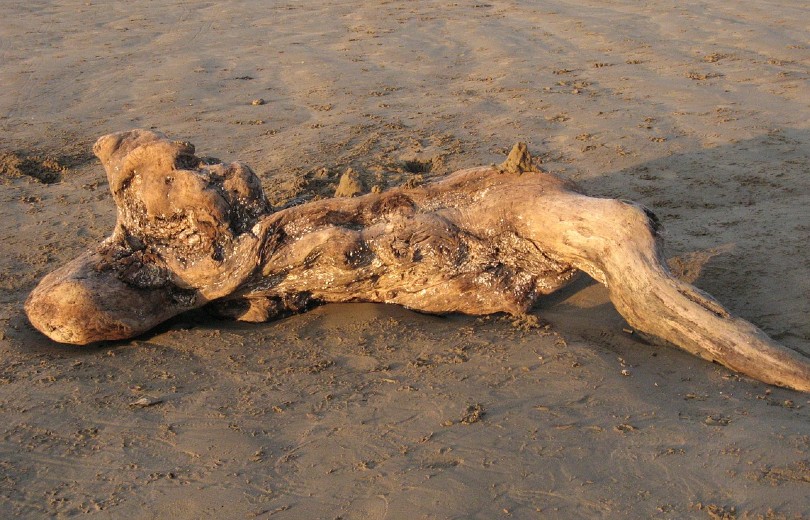Having a pond is a great eco-friendly way to spruce up your backyard. Not to mention the peaceful beauty that emanates from such a haven of peace, where giant colorful koi weave their way between the water lilies. What could be more Zen than fish in a water garden?
Well, there is one thing that can turn your outdoor oasis into a nightmare: a high pH level. This could indeed destroy all the aquatic life in your lovely pond. So, how to lower a high pH before it’s too late? Check out the four best methods in this guide.

Before You Start: What You Need to Know
The quality of the water in your pond depends on many internal and external factors. Rain can, for example, strongly acidify your water garden, as can dead leaves, dust, and wind-blown trash. Fish droppings and the quantity of fish in the pond also influence the quality of the water.
What Is a Simple Definition of pH?
The pH is a value that indicates the relative acidity or alkalinity of water on a scale of 0 to 14. Acidic water has a pH below 7, and alkaline water has a pH above 7. Most pond fish and other living organisms prefer pH levels of 6.5 to 8. The pH levels in your pond can fluctuate daily and are determined by complex relationships between carbon dioxide, the hardness of the water, photosynthesis of the plants, and the respiration of fish. If pH levels are not maintained, there could be negative effects in your pond biotope.

What Is the Biotope?
The biotope is a relatively stable living environment defined by a few characteristics: light, temperature, soil quality, and that of water and air. Optimal values of these factors are necessary for the living beings that inhabit the environment to survive. In the case of a marine biotope (i.e., your pond), if the pH level is too high or too low, the quality of life of organisms in the water (fish, plants, bacteria, etc.) will be significantly affected.
Why Does the pH Change During the Day?
The pH changes throughout the day. As carbon dioxide (CO2) is released by plants at night, the pH decreases or becomes more acidic. During the day, as CO2 is used by plants, the water may become more alkaline, and the pH will rise.
The pH can also affect bacteria and, therefore, decomposition in a pond since most microorganisms cannot survive acidic water. Without bacteria, the entire ecosystem of your pond will be destabilized.
Why Should You Care About the pH Level in Your Pond?
Knowledge of the pH value is essential, as it indicates the CO2 content in the water. The pH of your pond is always the result of the ratio between the KH (KH is the measure of carbonate hardness) and the CO2 content. KH is the alkaline component, and CO2 is the acid component.
If you increase the KH, there will be an increase in pH, up to a certain limit. Likewise, increasing the CO2 content will lower the pH, and reducing the CO2 content will increase the pH.
What Are the Consequences of an Inadequate pH Level for Your Fish?
The pH stability is essential because fish (i.e., koi) are used to a certain value; they can adapt, of course, but in this case, the pH of the water must be changed very slowly. In fact, the pond water’s pH directly affects the blood pH of fish; so, even if they can tolerate some variations, it is essential to maintain a pH within the recommended values range.
For your information, fish have an average blood pH of 7.7—7.8. Therefore, the ideal pH of your water should come closest to this value.
A sudden drop in the pH can lead to a decline in the pH of the blood: this is called acidosis. Fish are sensitive to it because it decreases the ability of hemoglobin to carry oxygen in the blood. Consequence: the fish breathe very badly and produce a lot of mucus from the gills, which are irritated. Acidosis can be counterbalanced by an increase in the release of CO2 by the fish when it breathes.
Alkalosis, on the other hand, can occur when the pH is above 9.3. A high pH has a direct effect on ammonium, which is a nitrogenous waste. The higher the pH of the pond water, the greater the danger that ammonia generates from ammonium. And ammonia is a very toxic compound, even lethal to fish.
Following the depletion of CO2 by excessive aeration or intense photosynthesis in summer, the pH can easily reach high values. From 9.0—9.2, ammonia excretion can reach 90% through the gills, and poisoning occurs. This phenomenon is accentuated by a high-protein diet, which forces the fish to release ammonia through the gills. In all cases, the fish adopt an abnormal behavior: they rub against the walls of the tanks, jump out of the water, or become lethargic.


The 4 Methods To Reduce the pH Value
Start by testing your water regularly. It can sometimes be challenging to recognize the signs of a pH too high (or too low), which is why a water test kit can be helpful. The API Pond Master Test Kit is easy to use and allows you to measure pH, ammonia, nitrite, and phosphate values as well.
Without knowing these values, it is not possible to pinpoint a problem if it arises, and regular testing may reveal minor concerns before they become catastrophic.
Now, let’s see the best methods to lower the pH in your pond:
1. Put driftwood in the pond
Adding a piece of natural driftwood to your pond will help gradually lower a high pH level. However, it can color your water. Therefore, it is recommended to soak driftwood in a separate container submerged for one to two weeks before putting it in your pond. You should also boil it to sterilize it to ensure you don’t introduce any germ or disease into your body of water.
The wood will act as a natural filter, just like the leaves of a tree filter the air. Exterior contaminants will be captured by the wood, which will prevent your pH from rising. You may be tempted to buy ready-made antlers from specialist stores, but do your research beforehand as they may contain chemicals that are harmful to your fish.

2. Add peat to your pond
Peat is also a great way to naturally help your water return to an optimal pH level. But again, it can discolor your water. It is advisable to pre-treat your peat moss in a separate bucket for a few days before adding it to your pond. This will help dissipate the yellowish tint that natural peat can give to the water.
Peat moss can be added directly to your pond filter in the form of pellets, which you can buy at specialty garden stores or pet stores. You can put them in a filter bag or put them directly inside your filter, which is highly recommended.
Adding peat to your pond, whether in the form of natural moss or pellets, will gradually lower your pH over the long term. You should notice a lot less variation and thus change your water less often.
Depending on the hardness of your water, you may need to do some experimenting to find the exact amount of peat required to achieve an optimum pH level.
3. Add Indian almond leaves (Terminalia catappa Linn.)
As they soften, almond leaves lower the pH of your water. But they can also release a significant number of tannins, so it’s best to soak them first to allow the color to escape and prevent it from staining your pond. However, the coloring of the almond leaves is generally quite subtle, especially compared to other methods that release much stronger tannins in the water.
Some people claim that almond leaves are a natural aid for your fish and may even cure certain diseases by acting as an antioxidant and anti-inflammatory. However, these claims have never been fully confirmed, and studies are still ongoing.
Plus, almond leaves can add an aesthetic touch to your pond. Your fish will particularly like them because they like the natural hiding place provided by the leaves in the aquatic environment. This “natural disorder” perfectly recreates a river, lake, or other body of water.

4. Use a product specially designed to lower the pH
The last method to reduce the pH of your ornamental pond is to use a commercial product. It is not the most economical method, nor the most natural. Still, it is nonetheless safe for your fish and aquatic plants. But you will need to follow the product instructions carefully.
In general, you will have to mix beforehand with water from the pond and then spread it over the entire surface, avoiding pouring directly on the fish.
Proceed in small quantities, waiting at least 24 hours between two treatments and checking the pH each time.
API Pond pH Down Pond Water is an inexpensive product that will allow you to effectively treat your pond.

Final Thoughts
A stable pH is essential for the well-being of your pond fish. Since the pH fluctuates during the day for natural reasons, you don’t have to worry about a difference of 0.5 units per day. Beyond that, it is better to investigate and resolve this situation as quickly as possible before it affects the aquatic inhabitants. Get a water test kit, and if the pH is too high, use one of the methods above to restore the balance of your marine ecosystem.
Related Read: How to Lower pH in Your Aquarium with Vinegar (Step-by-Step Guide)
Featured Image Credit: Jens Rother, Shutterstock
